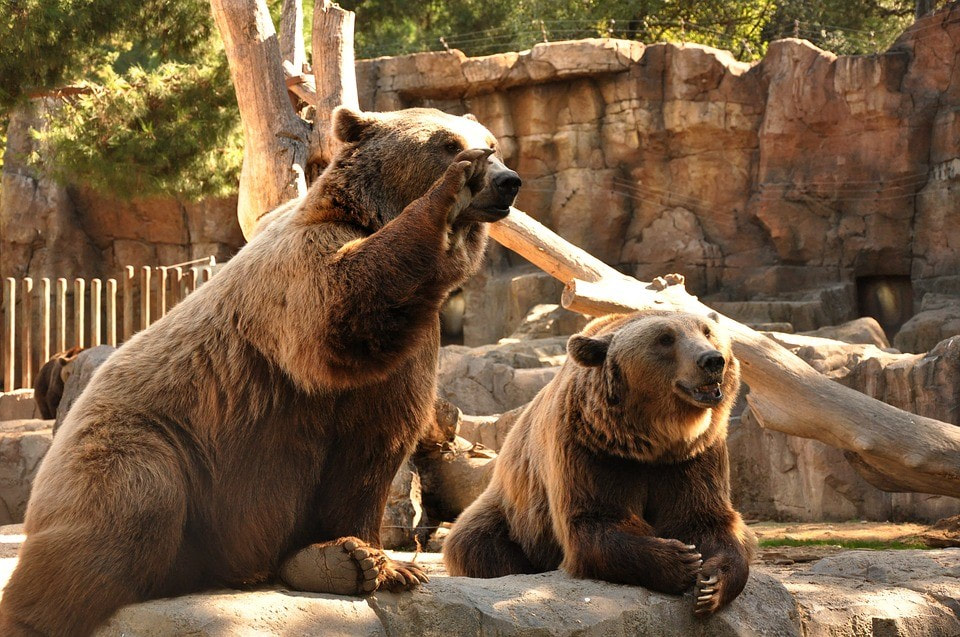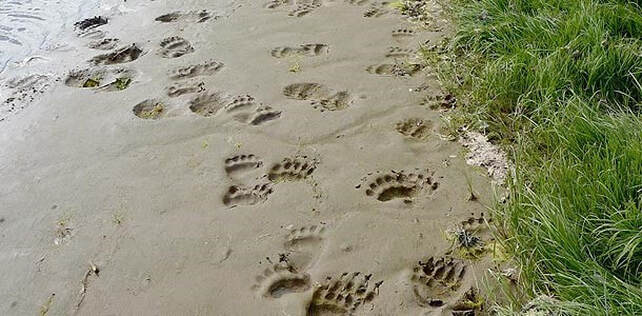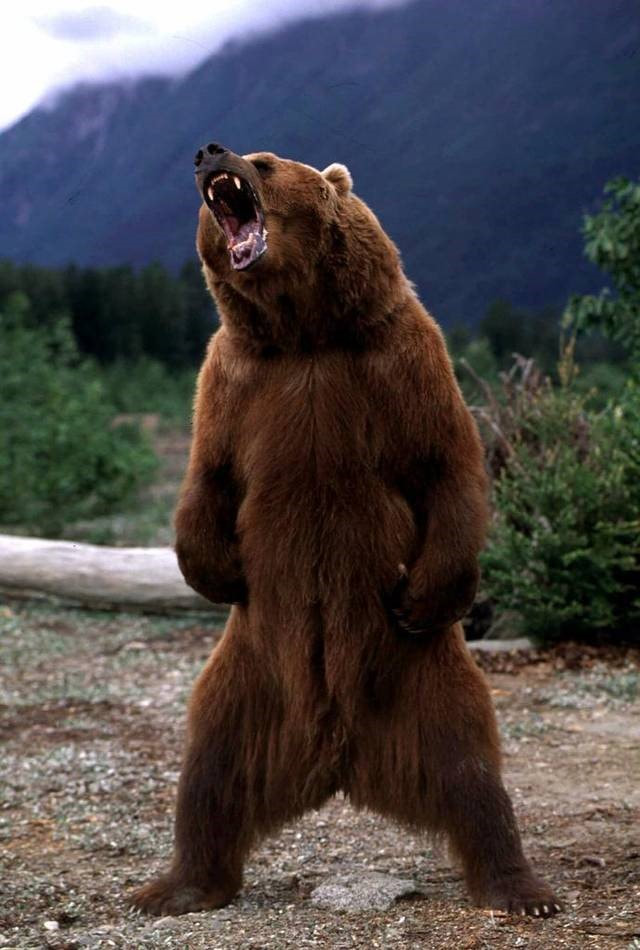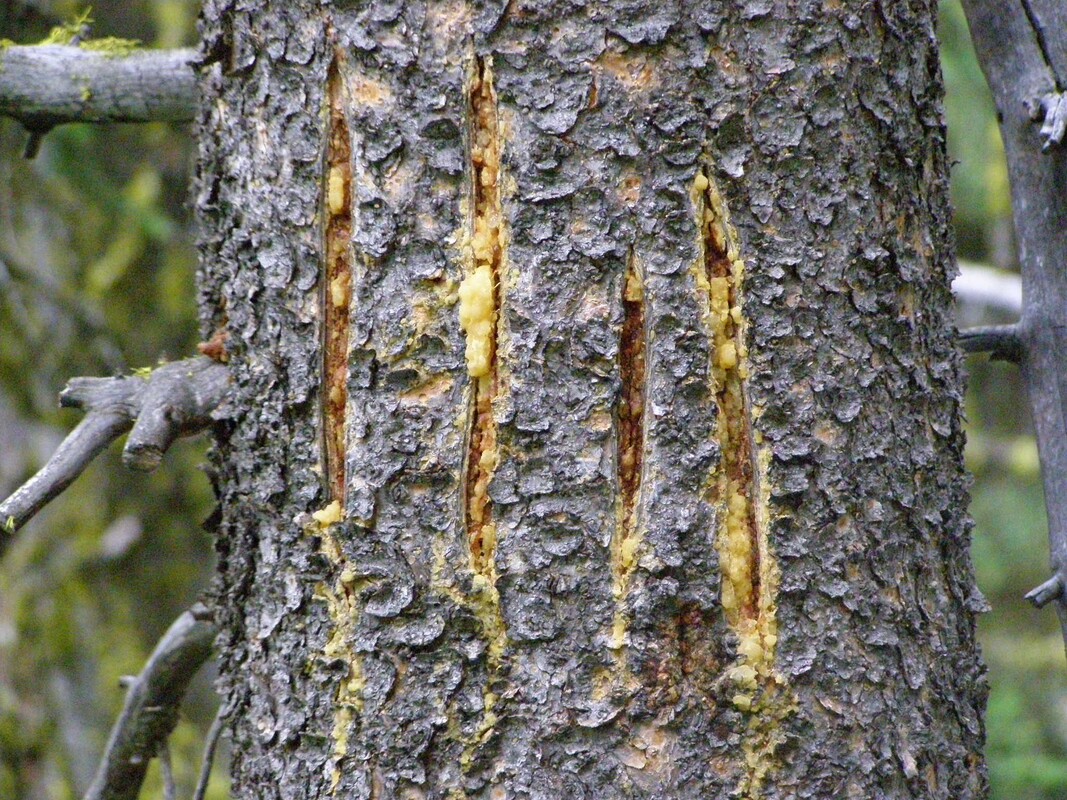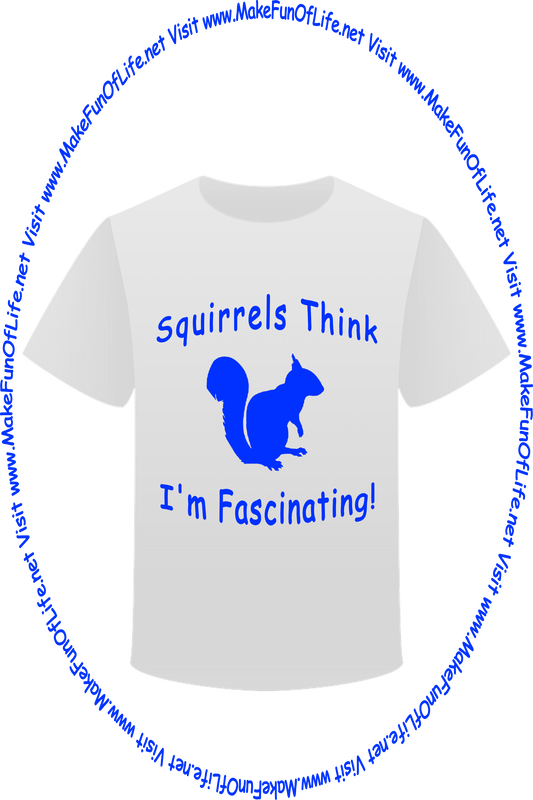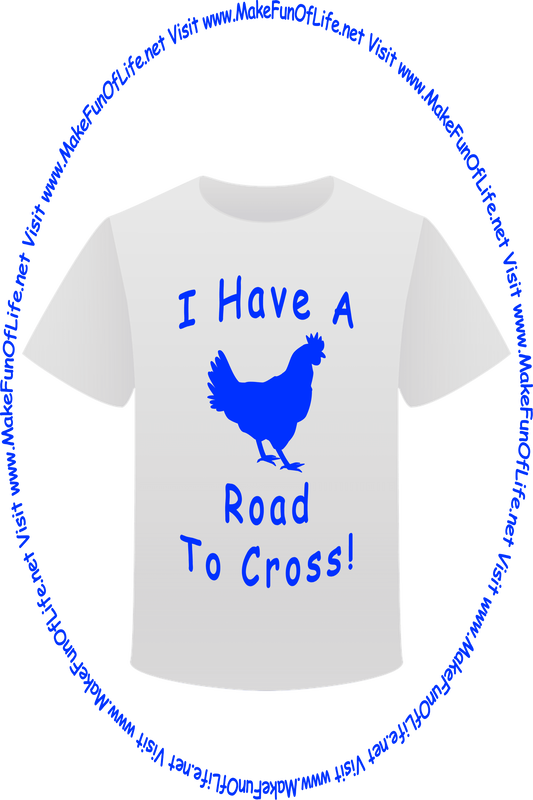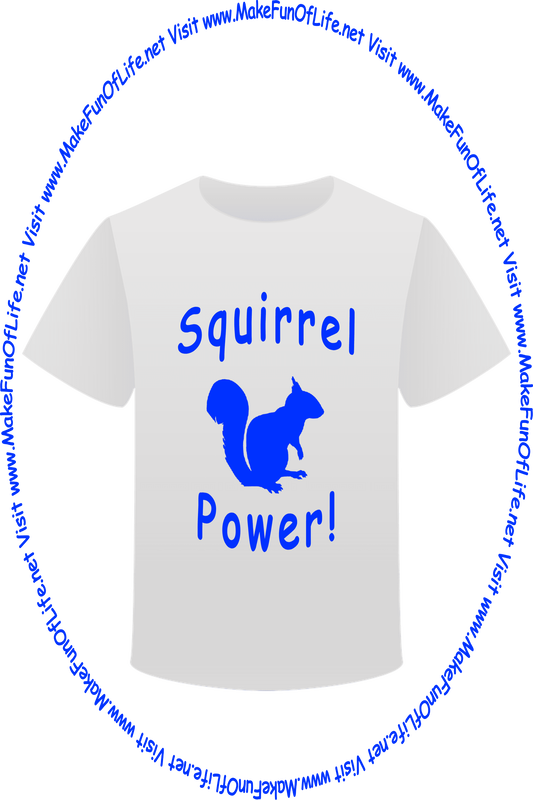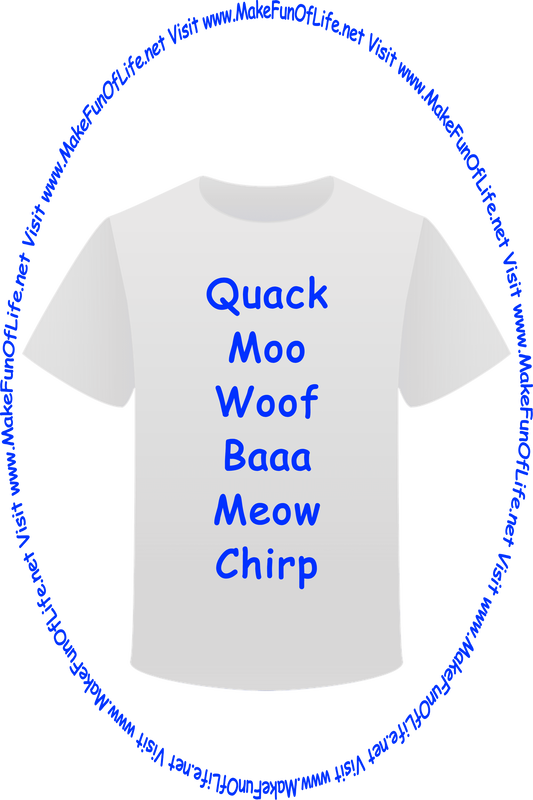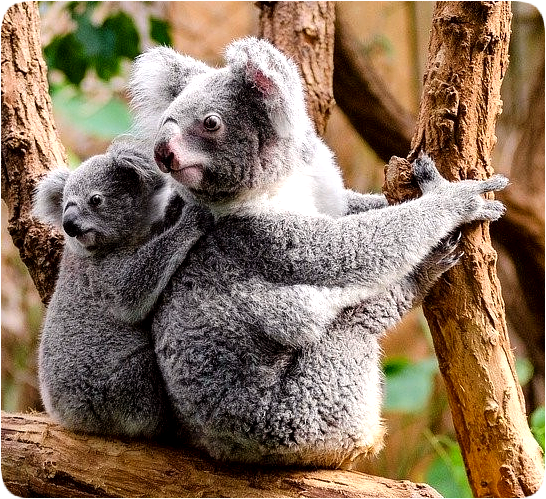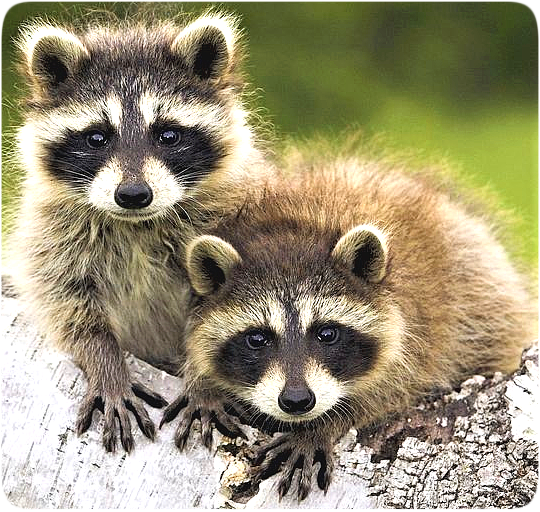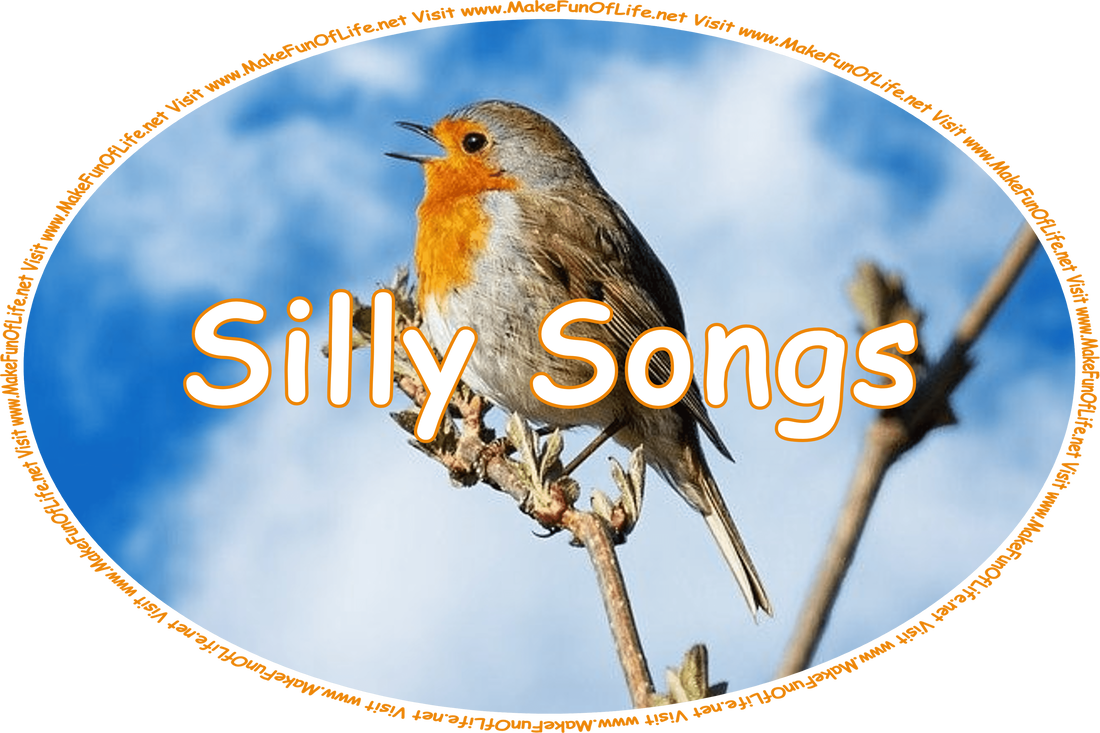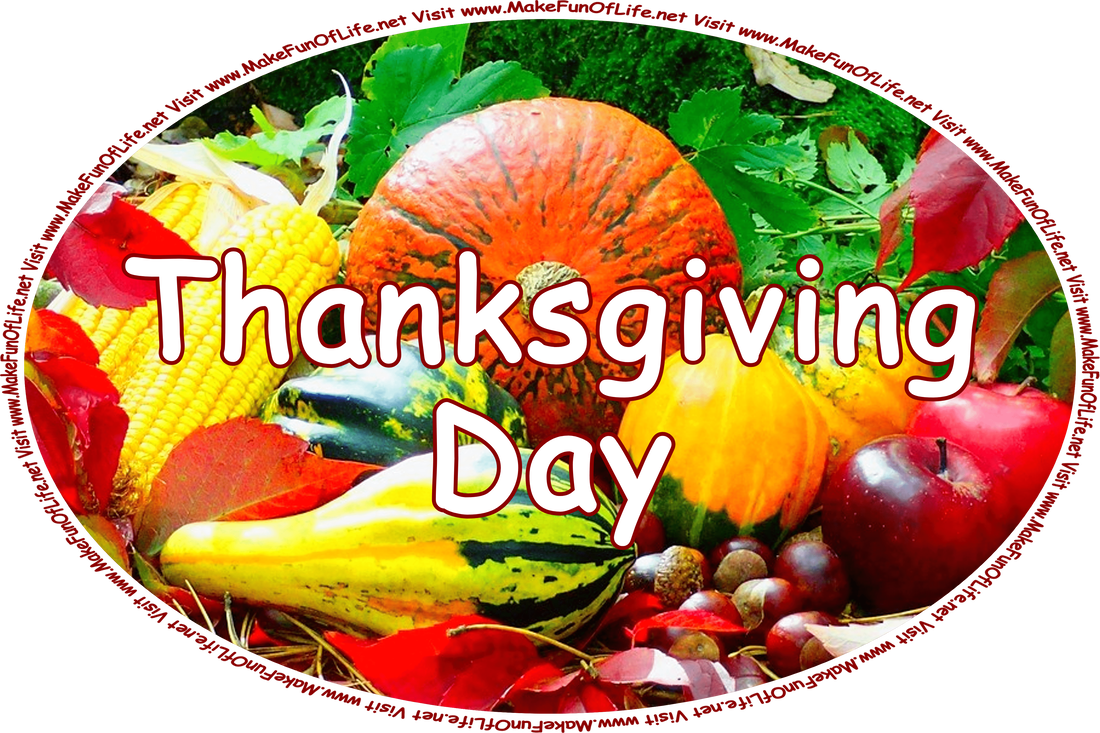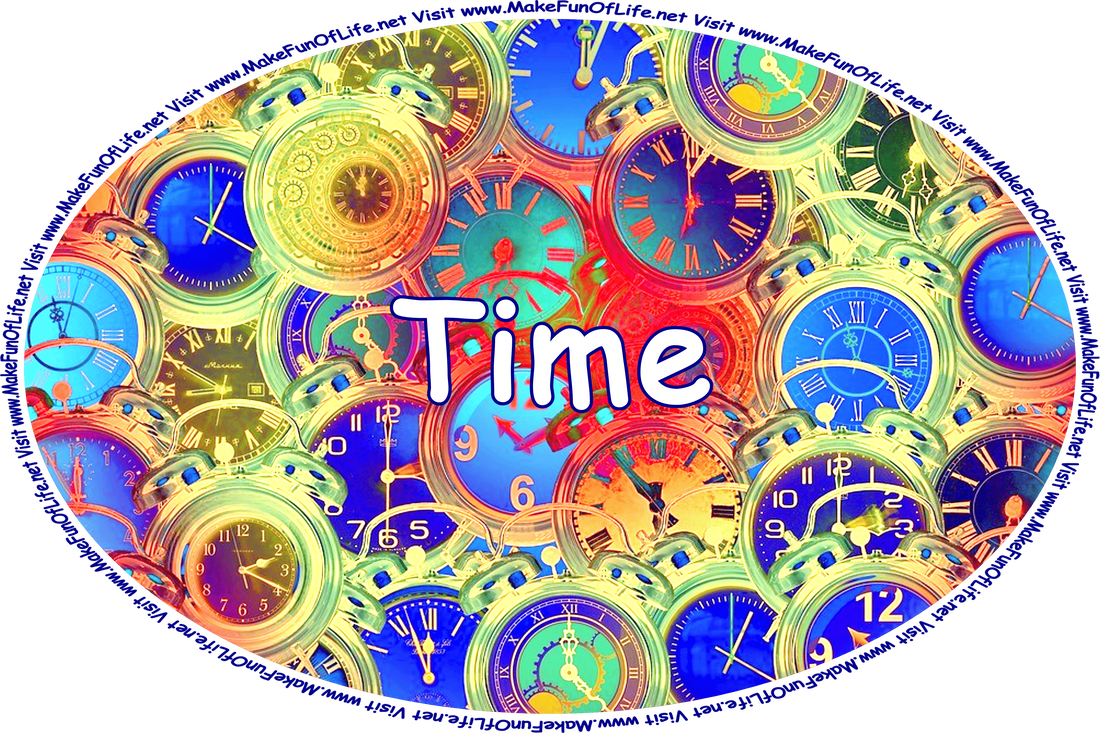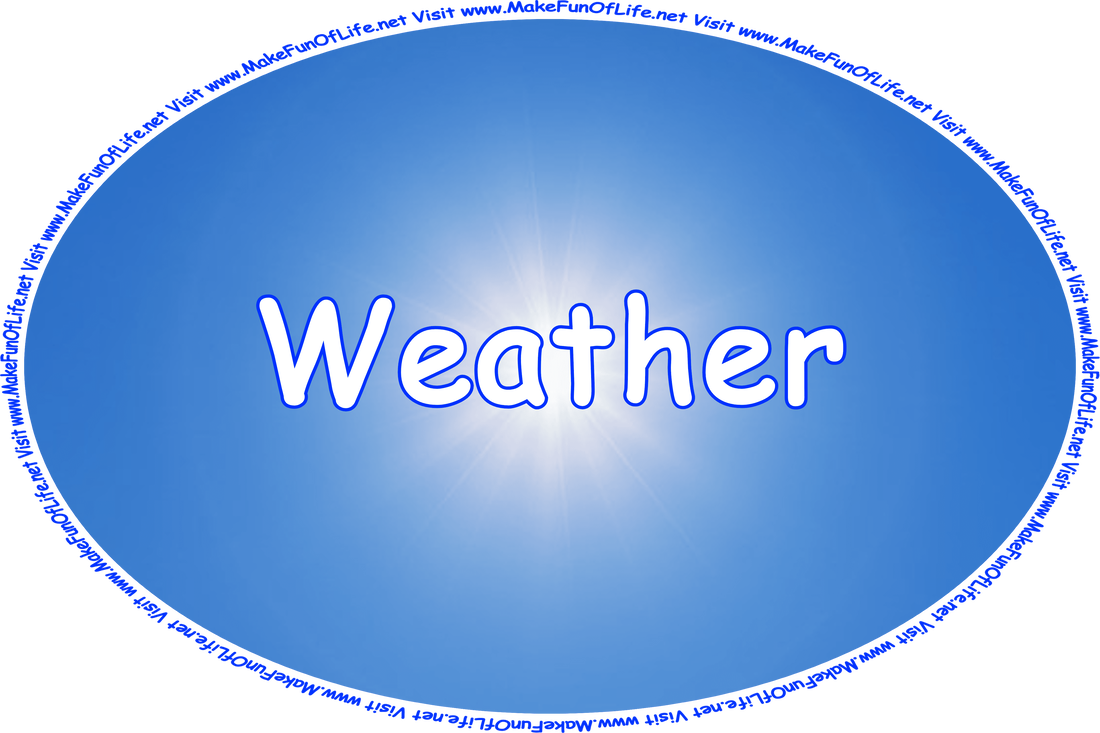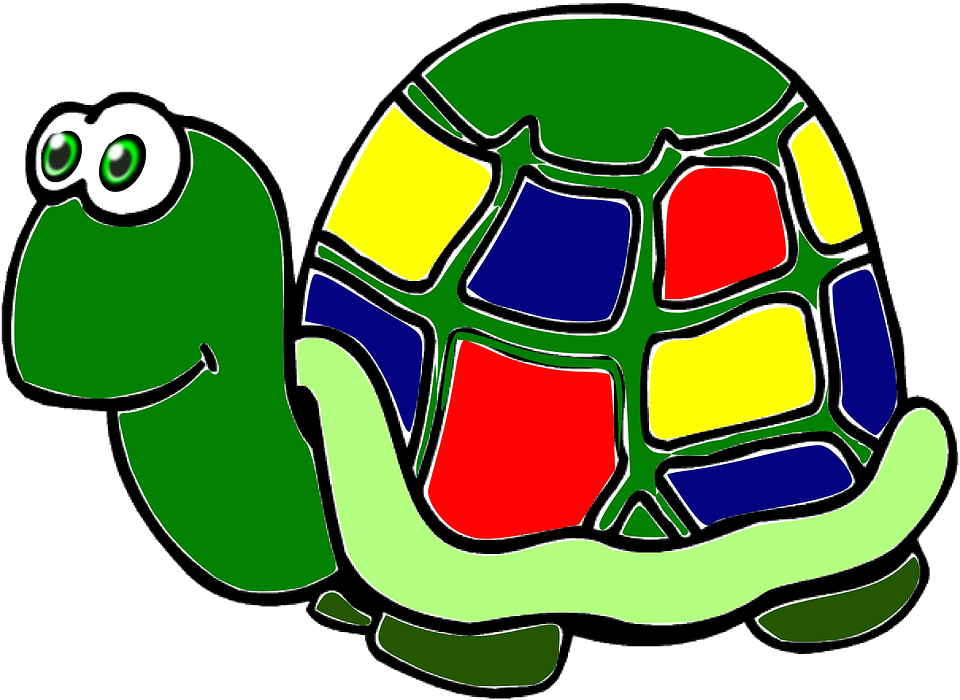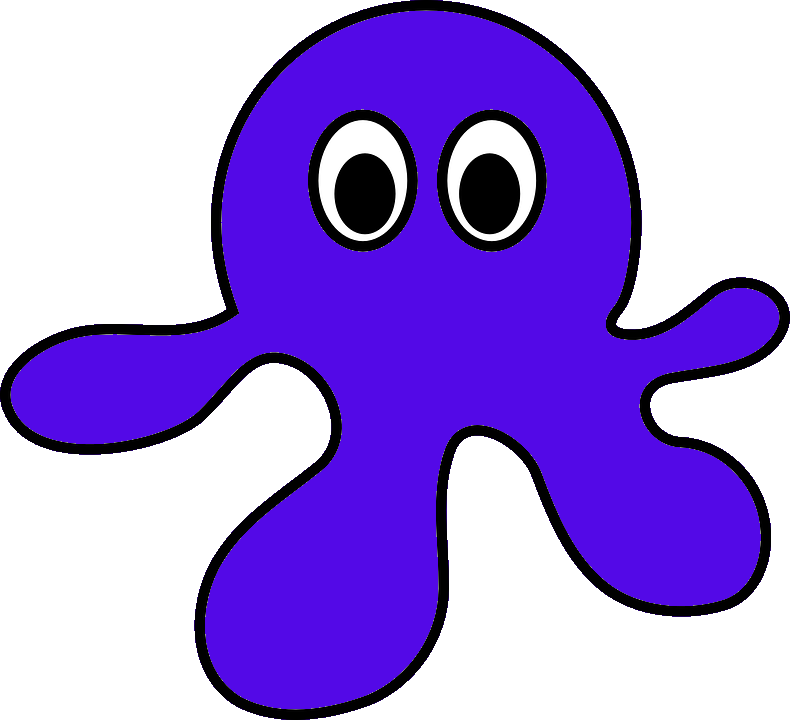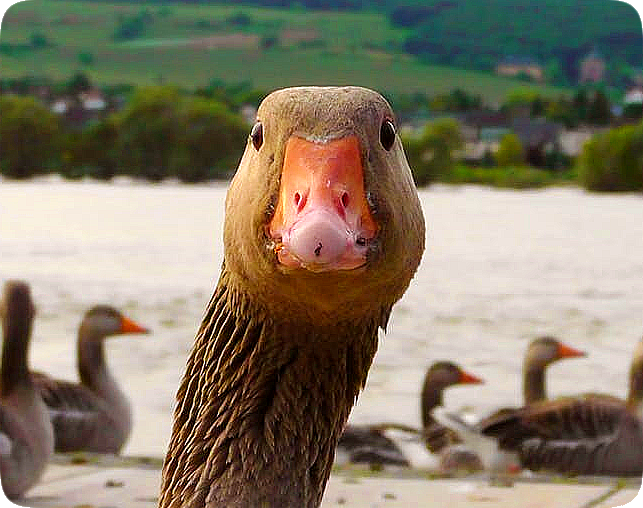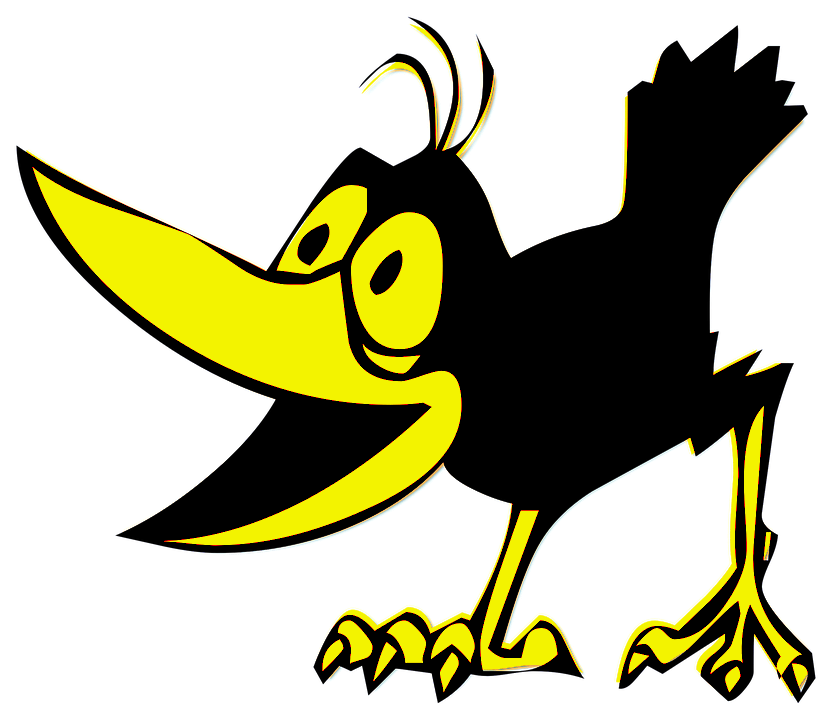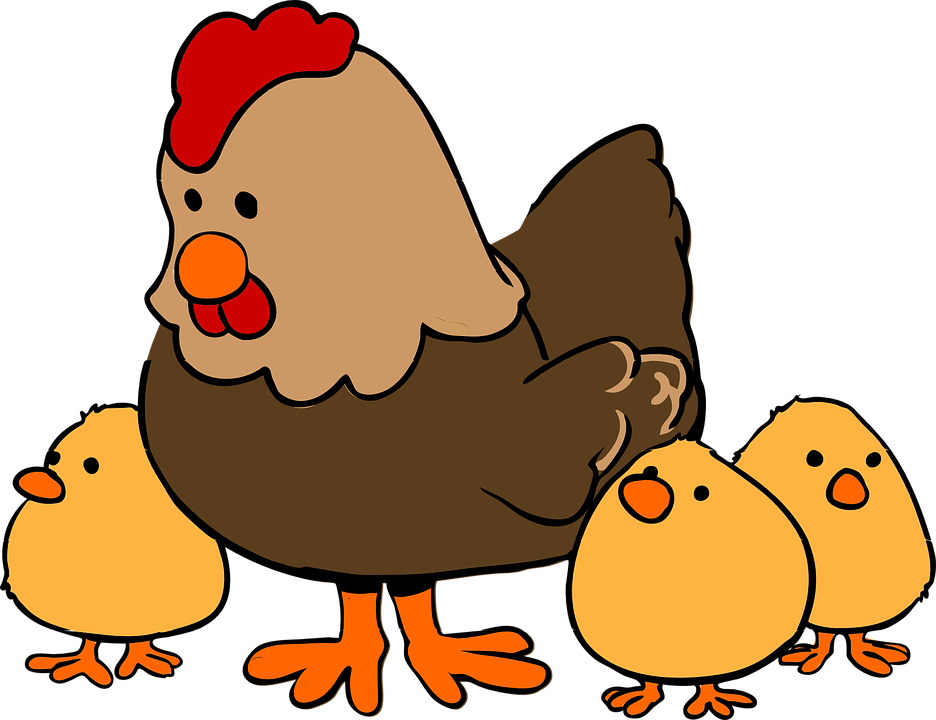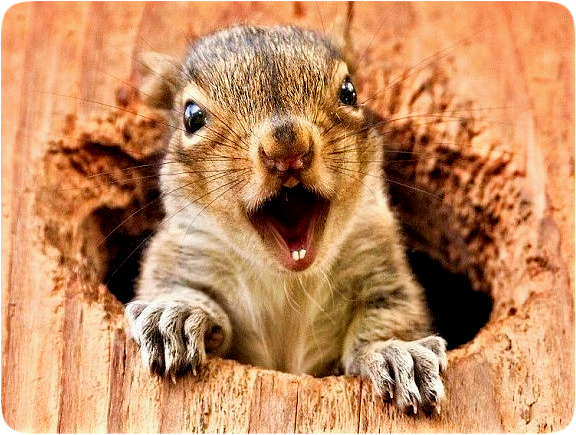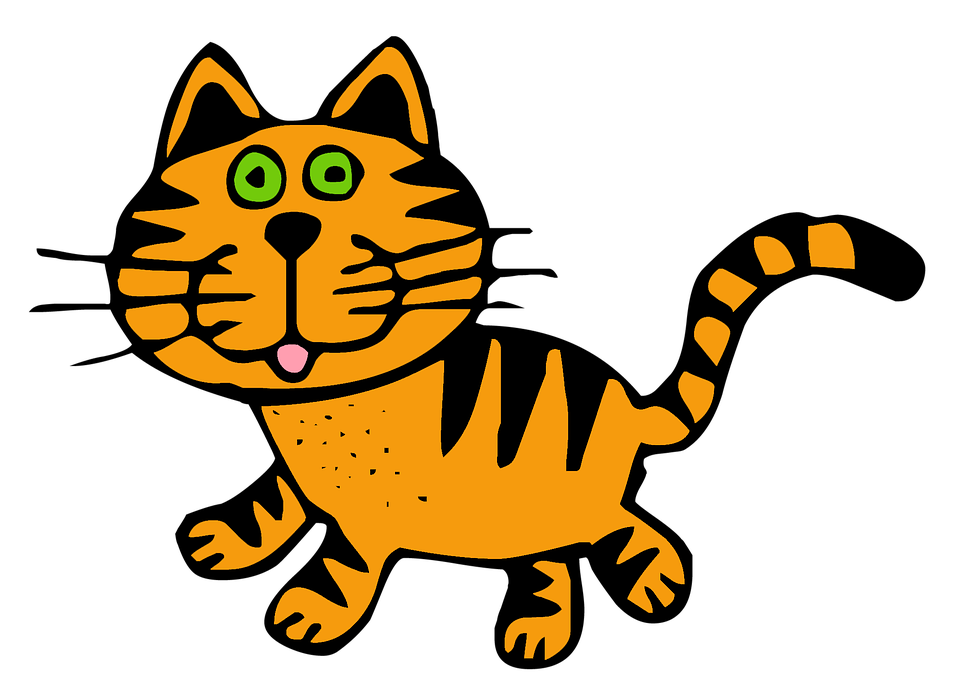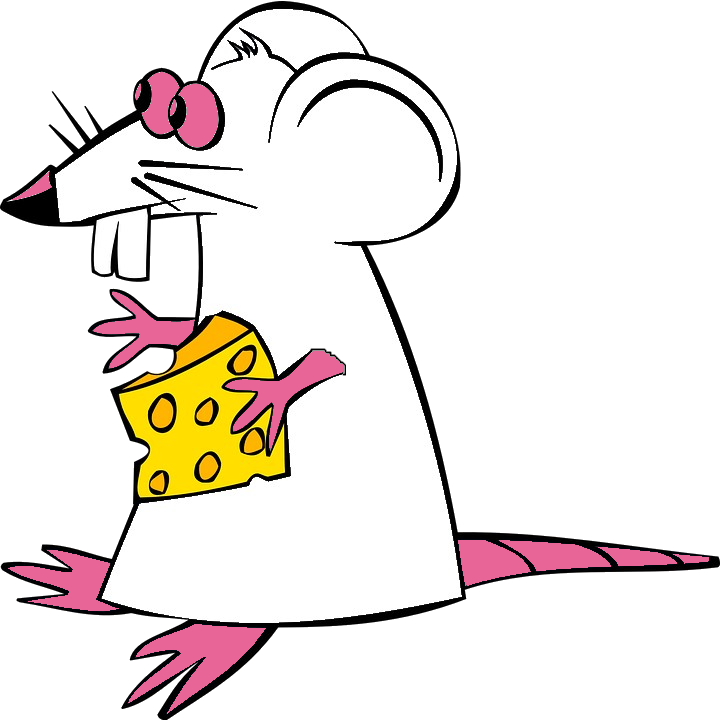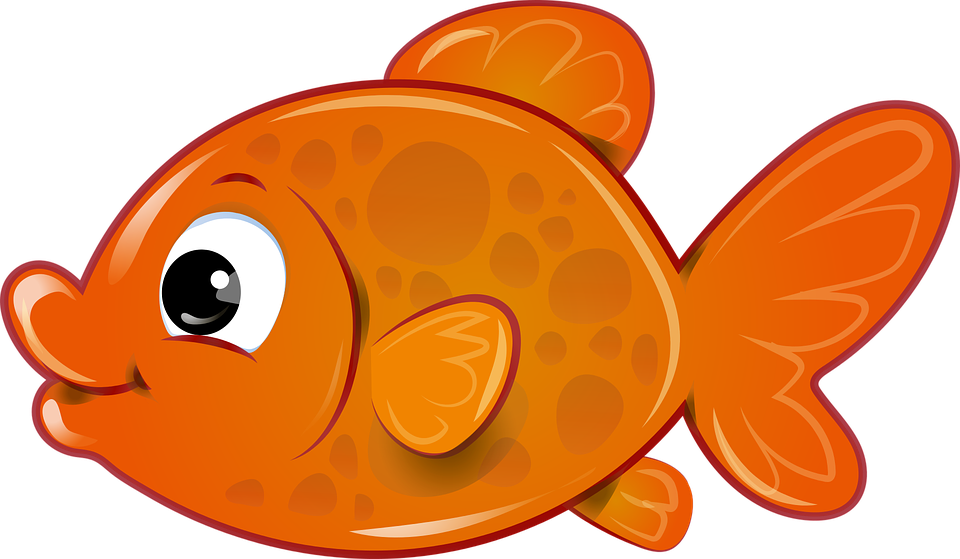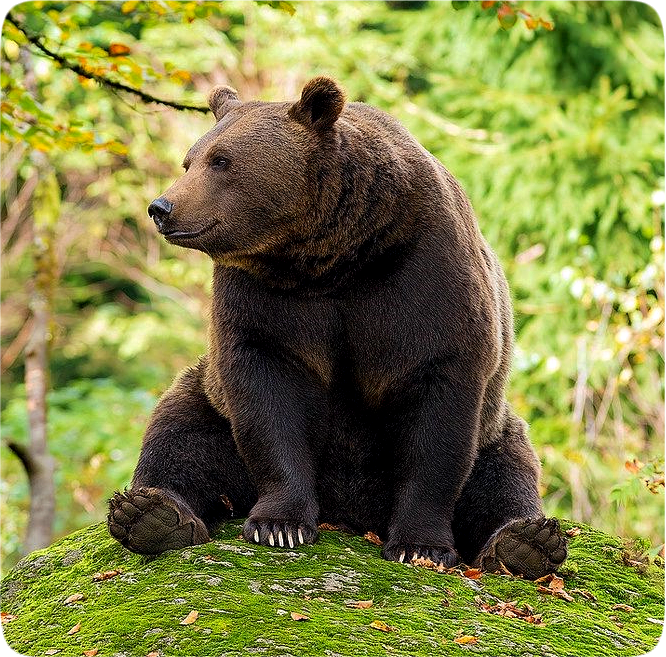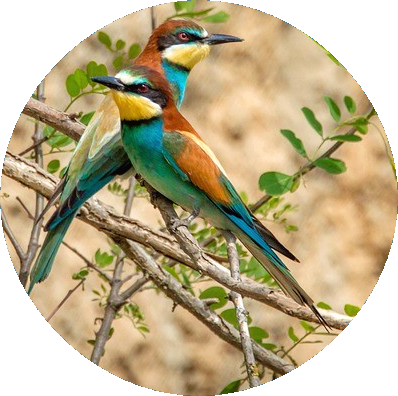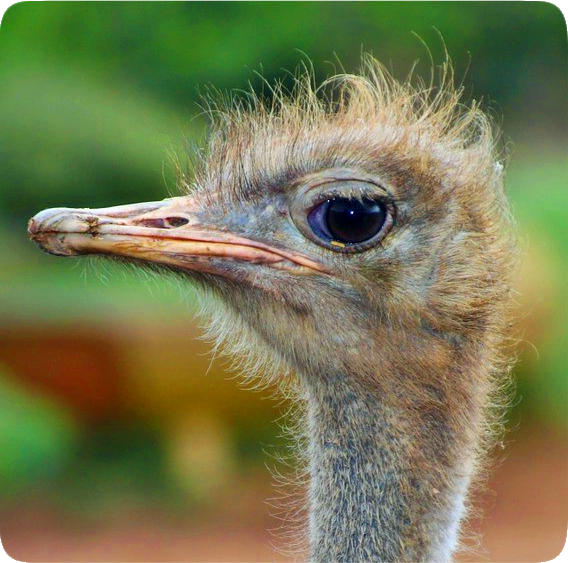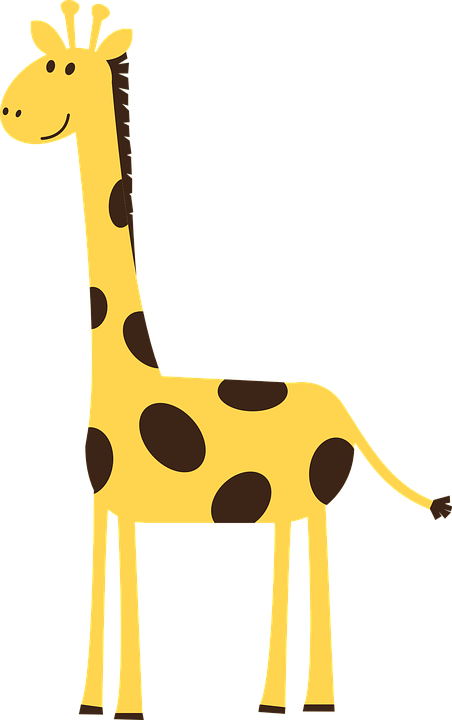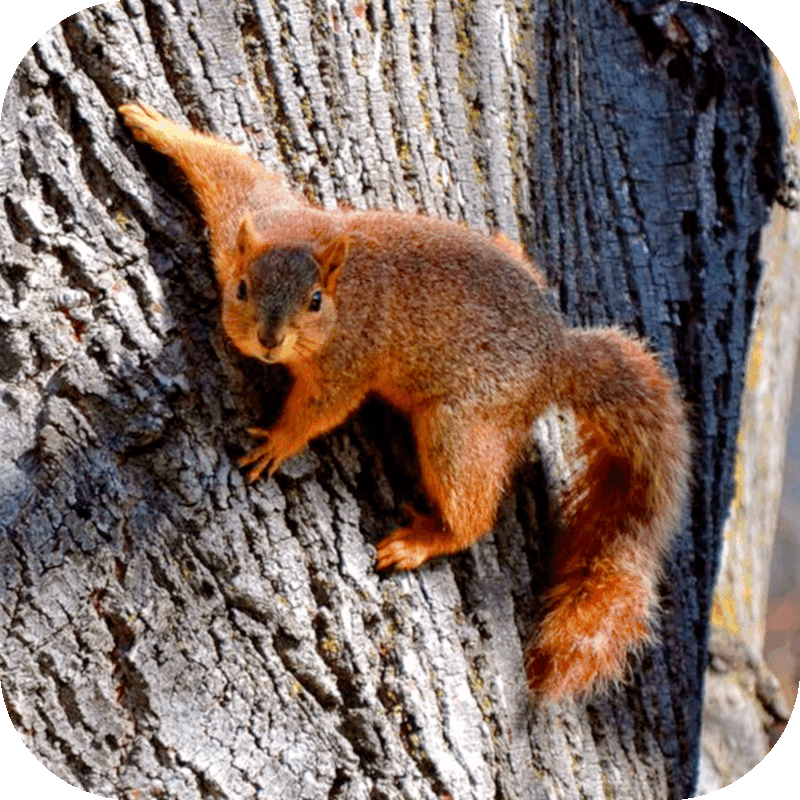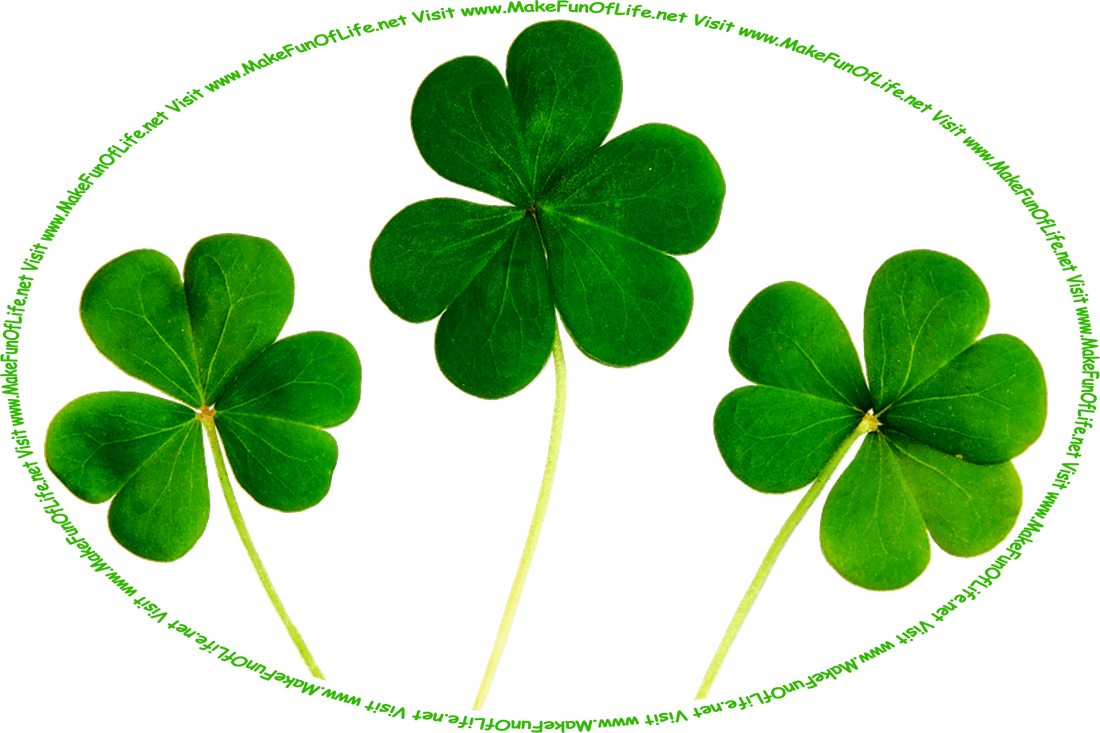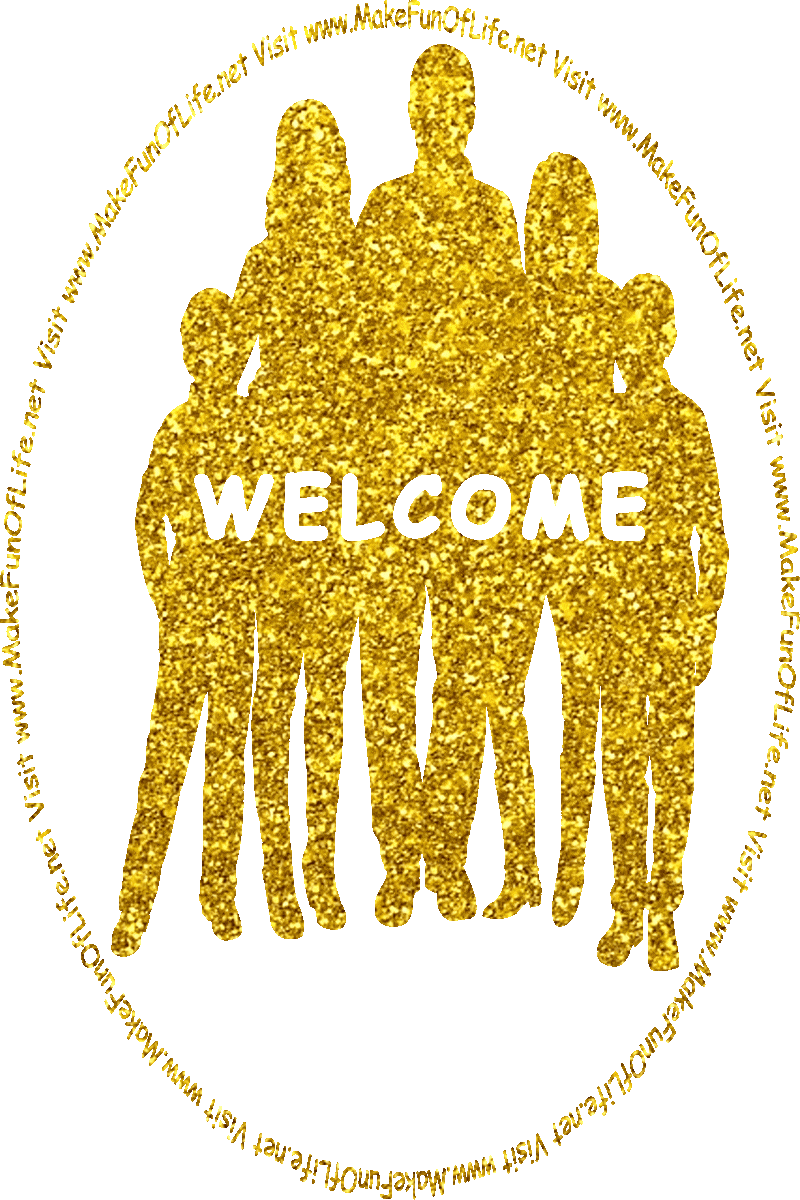A wise person once said, “Never pet a bear unless it is a rug.”
Fuzzy Wuzzy
Fuzzy Wuzzy was a bear;
Fuzzy Wuzzy had no hair;
Fuzzy Wuzzy wasn’t very fuzzy,
Was ’e?
by Author Unknown: as published in “Wisconsin’s Rapids Daily Tribune” (31 July 1942) newspaper
(Was ’e: Was he)
Bears are large, furry animals that inhabit many different environments, including forests, swamps, mountains, and grasslands. Bears are found in North America, Asia, Europe, and to a lesser extent, South America.
Bears Facts
- An adult male bear is called a boar.
- An adult female bear is called a sow.
- A young bear is called a cub.
- The plural of bear is bears.
- A group of bears is called a family, a sleuth, or a sloth.
- The sounds made by bears are called chomps, growls, grunts, huffs, moans, snorts, and woofs.
- Bears are found in the wild on every continent except Africa, where they are now extinct, and Australia, which they have never naturally inhabited.
Elijah: Why did the bear tiptoe through the campground?
Eleanor: Because he did not want to wake the sleeping bags.
Eight species of bears are now living on Earth.
- American black bears (Ursus americanus)
- Asiatic black bears (Ursus thibetanus)
- Brown bears (Ursus arctos, which includes the sub-species grizzly bears (Ursus arctos horribilis))
- Giant pandas (Ailuropoda melanoleuca)
- Polar bears (Ursus maritimus)
- Sloth bears (Melursus ursinus)
- Spectacled bears (Tremarctos ornatus)
- Sun bears (Helarctos malayanus)
Fuzzy Wuzzy
Fuzzy Wuzzy was a bear;
Fuzzy Wuzzy had no hair;
Fuzzy Wuzzy wasn’t very fuzzy,
Was ’e?
by Author Unknown: as published in “Wisconsin’s Rapids Daily Tribune” (31 July 1942) newspaper
(Was ’e: Was he)
Bears are large, furry animals that inhabit many different environments, including forests, swamps, mountains, and grasslands. Bears are found in North America, Asia, Europe, and to a lesser extent, South America.
Bears Facts
- An adult male bear is called a boar.
- An adult female bear is called a sow.
- A young bear is called a cub.
- The plural of bear is bears.
- A group of bears is called a family, a sleuth, or a sloth.
- The sounds made by bears are called chomps, growls, grunts, huffs, moans, snorts, and woofs.
- Bears are found in the wild on every continent except Africa, where they are now extinct, and Australia, which they have never naturally inhabited.
Elijah: Why did the bear tiptoe through the campground?
Eleanor: Because he did not want to wake the sleeping bags.
Eight species of bears are now living on Earth.
- American black bears (Ursus americanus)
- Asiatic black bears (Ursus thibetanus)
- Brown bears (Ursus arctos, which includes the sub-species grizzly bears (Ursus arctos horribilis))
- Giant pandas (Ailuropoda melanoleuca)
- Polar bears (Ursus maritimus)
- Sloth bears (Melursus ursinus)
- Spectacled bears (Tremarctos ornatus)
- Sun bears (Helarctos malayanus)
There was an Old Person of Ware,
Who rode on the back of a bear;
When they ask’d, “Does it trot?”
He said, “Certainly not!
He’s a Moppsikon Floppsikon bear!”
-Edward Lear (1812 -1888): “More Nonsense, Pictures, Rhymes, Botany, Etc.” (1872), limerick 43
So, how can you tell the difference between a brown bear and a grizzly bear? First, climb a tree. Next, observe which of the following occurs: 1. If the bear climbs the tree after you and eats you, it is a brown bear. 2. If the bear knocks down the tree and eats you, it is a grizzly bear.
Bears vary in size from 1.1 to 3 meters (3.5 to 10 feet) long and weigh from 25 to 770 kg (55 to 1,700 pounds). The largest bear is the Polar Bear, and the smallest bear is the Sun Bear (also known as the honey bear or the Malay bear).
Bear fur ranges in color from black to brown to blond to white.
The scientific name for the ‘grizzly bear’ is ‘Ursus arctos horribilis.’ Yes, you have guessed correctly - ‘horribilis’ is Latin for ‘horrible.’ Scientists have decided to label grizzlies as ‘horrible bears.’ Grrr-rrr!
Esther: What kind of bears like to go out in the rain?
Estella: Drizzly bears!
Bears belong to the order Carnivora, a group of animals that are regarded as being mainly carnivorous, or eaters of meat. However, most bears are omnivorous, or eaters of both meat and plants. Omnivorous bears like honey, but more often they will eat grass, leaves, fruits, berries, nuts, roots, bees and other insects, fish, birds, and mammals such as deer, elk, and slow joggers. Polar bears are the one exception: they are carnivorous, or eaters of meat only. So remember, if a bear eats you, it is not being cruel to you in particular; it is just doing what bears do.
Brenda: What did the bear say when she saw skateboarders?
Melinda: “Mmmm, meals on wheels!”
Despite sometimes being called ‘koala bears,’ koalas are not bears. One of the main differences between koalas and bears is that koalas, like kangaroos, opossums, and other marsupials, have pouches in which they carry their young, whereas bears do not. Koalas are also herbivores, or animals that eat plants, so koalas do not eat humans and other animals.
Who rode on the back of a bear;
When they ask’d, “Does it trot?”
He said, “Certainly not!
He’s a Moppsikon Floppsikon bear!”
-Edward Lear (1812 -1888): “More Nonsense, Pictures, Rhymes, Botany, Etc.” (1872), limerick 43
So, how can you tell the difference between a brown bear and a grizzly bear? First, climb a tree. Next, observe which of the following occurs: 1. If the bear climbs the tree after you and eats you, it is a brown bear. 2. If the bear knocks down the tree and eats you, it is a grizzly bear.
Bears vary in size from 1.1 to 3 meters (3.5 to 10 feet) long and weigh from 25 to 770 kg (55 to 1,700 pounds). The largest bear is the Polar Bear, and the smallest bear is the Sun Bear (also known as the honey bear or the Malay bear).
Bear fur ranges in color from black to brown to blond to white.
The scientific name for the ‘grizzly bear’ is ‘Ursus arctos horribilis.’ Yes, you have guessed correctly - ‘horribilis’ is Latin for ‘horrible.’ Scientists have decided to label grizzlies as ‘horrible bears.’ Grrr-rrr!
Esther: What kind of bears like to go out in the rain?
Estella: Drizzly bears!
Bears belong to the order Carnivora, a group of animals that are regarded as being mainly carnivorous, or eaters of meat. However, most bears are omnivorous, or eaters of both meat and plants. Omnivorous bears like honey, but more often they will eat grass, leaves, fruits, berries, nuts, roots, bees and other insects, fish, birds, and mammals such as deer, elk, and slow joggers. Polar bears are the one exception: they are carnivorous, or eaters of meat only. So remember, if a bear eats you, it is not being cruel to you in particular; it is just doing what bears do.
Brenda: What did the bear say when she saw skateboarders?
Melinda: “Mmmm, meals on wheels!”
Despite sometimes being called ‘koala bears,’ koalas are not bears. One of the main differences between koalas and bears is that koalas, like kangaroos, opossums, and other marsupials, have pouches in which they carry their young, whereas bears do not. Koalas are also herbivores, or animals that eat plants, so koalas do not eat humans and other animals.
Do you like to go out in the woods to fish or pick berries? Bears do, too, though they do not use a rod and reel or a bucket - just their big sharp claws and big sharp teeth (the better to eat you with). Statistically, the odds are greater than zero that when you are out in the woods, there will be a bear somewhere nearby - maybe right behind you and approaching fast. Always keep your wits about you when in the out-of-doors, and take a friend to be your bear lookout while you fish or pick berries.
Grizzly Bear
If you ever, ever, ever
meet a grizzly bear,
You must never, never, never
ask him where
He is going,
or what he is doing;
For if you ever, ever dare
to stop a grizzly bear,
You will never
meet another grizzly bear.
by Mary Austin
Campaigns to bear-proof all garbage containers in wild areas have been difficult because, as one wildlife biologist put it, “There is a considerable overlap between the intelligence levels of the smartest bears and the dumbest tourists.”
In National Parks in the United States of America and in parks in other parts of the world, signs are posted that tell people not to feed the bears. Bears hunt and scavenge for food. They will eat any food they find, including food thrown in the garbage, pet food, and birdseed. Bears will also eat empty toothpaste tubes and containers such as pizza boxes that have the scent of food on them. If you travel through or live in bear country, do not place anything edible where it is accessible to bears. When bears find food, they will return again and again to the spot and may take up residence and stake out a territory around the area, becoming not just a nuisance, but a danger to people, pets, and livestock (farm animals), all of which bears regard as food and territorial trespassers.
Gary: What does every bear need?
Ryan: Just the ‘bear’ necessities!
Bear homes are called dens, and they can be cavities or recesses in rocks, hollow trees, caves, holes dug into the ground, or just nice comfortable spots in bushes or brush piles. Bears are also known to sleep or rest up in the branches of trees.
Laura: What do you call bears with no ears?
Nora: B.
Grizzly Bear
If you ever, ever, ever
meet a grizzly bear,
You must never, never, never
ask him where
He is going,
or what he is doing;
For if you ever, ever dare
to stop a grizzly bear,
You will never
meet another grizzly bear.
by Mary Austin
Campaigns to bear-proof all garbage containers in wild areas have been difficult because, as one wildlife biologist put it, “There is a considerable overlap between the intelligence levels of the smartest bears and the dumbest tourists.”
In National Parks in the United States of America and in parks in other parts of the world, signs are posted that tell people not to feed the bears. Bears hunt and scavenge for food. They will eat any food they find, including food thrown in the garbage, pet food, and birdseed. Bears will also eat empty toothpaste tubes and containers such as pizza boxes that have the scent of food on them. If you travel through or live in bear country, do not place anything edible where it is accessible to bears. When bears find food, they will return again and again to the spot and may take up residence and stake out a territory around the area, becoming not just a nuisance, but a danger to people, pets, and livestock (farm animals), all of which bears regard as food and territorial trespassers.
Gary: What does every bear need?
Ryan: Just the ‘bear’ necessities!
Bear homes are called dens, and they can be cavities or recesses in rocks, hollow trees, caves, holes dug into the ground, or just nice comfortable spots in bushes or brush piles. Bears are also known to sleep or rest up in the branches of trees.
Laura: What do you call bears with no ears?
Nora: B.
When a bear stands up on its hind, or back, legs, it is trying to get a better view of a situation, or a bear’s eye view, and it may or may not intend to chomp on you. However, just to be safe, you should have a plan for what to do in case a bear does intend to maul (attack) you. Because laws and bears differ from place to place, your best source of information on what to do will likely be local people, including park rangers, law enforcement officers, experienced hunters, and long-time residents.
Giant panda bears can spend up to sixteen hours a day feeding themselves, on twenty to forty pounds of food each day. Unlike other bears that eat a lot of protein in the form of meat, a wild giant panda’s diet is about ninety-nine percent bamboo, with the remaining one percent consisting of other grasses and occasionally small rodents or musk deer fawns. In zoos, giant pandas eat bamboo, sugar cane, rice gruel, special high-fiber biscuits, carrots, apples, and sweet potatoes. Who’s hungry?
Furry Bear
If I were a bear
And a big bear too,
I shouldn’t much care
If it froze or snew;
I wouldn’t much mind
If it snowed or friz-
I’d be all fur-lined
With a coat like his!
by A. A. Milne (Alan Alexander Milne (1882 - 1956))
Bears can sense food - which means you - from distances of up to 29 kilometers (18 miles) away.
Giant panda bears can spend up to sixteen hours a day feeding themselves, on twenty to forty pounds of food each day. Unlike other bears that eat a lot of protein in the form of meat, a wild giant panda’s diet is about ninety-nine percent bamboo, with the remaining one percent consisting of other grasses and occasionally small rodents or musk deer fawns. In zoos, giant pandas eat bamboo, sugar cane, rice gruel, special high-fiber biscuits, carrots, apples, and sweet potatoes. Who’s hungry?
Furry Bear
If I were a bear
And a big bear too,
I shouldn’t much care
If it froze or snew;
I wouldn’t much mind
If it snowed or friz-
I’d be all fur-lined
With a coat like his!
by A. A. Milne (Alan Alexander Milne (1882 - 1956))
Bears can sense food - which means you - from distances of up to 29 kilometers (18 miles) away.
What is a bear tree? A bear tree is any tree used as a rubbing and scratching post by a bear. Experienced outdoors people can identify bear trees and other signs of bear activity, which allows them to know when they are in a bear’s territory and then to hightail it out of there immediately!
Algy
Algy met a bear,
The bear met Algy.
The bear was bulgy,
The bulge was Algy.
by Author Unknown
Bears are solitary animals. Only mother bears and their cubs live together. Father bears do not help to raise the cubs. In fact, father bears do not even recognize their own offspring, and will treat them as they would any other trespassers on their territory.
Amos: Why do brown bears wear red-tinted contact lenses?
Moses: So they can hide in apple trees.
“When you see a bear wandering around in a town, remember that it is not the bear that is lost and confused; it is the town that is lost and confused, because the town, buildings and roads and people and all, has wandered into the middle of bear country.” -David Hugh Beaumont (born 1966)
Marcella: What do you get when you cross a bear with a kangaroo?
Annabella: A fur coat with pockets.
Bears are rapid runners, swift swimmers, and capable climbers. Bears can run up to 56 kilometers (35 miles) an hour for short distances, much faster than the average top speed of humans over short distances, which is slightly more than 32 kilometers (20 miles) an hour.
Sandy: Why do bears go barefoot?
Rocky: Because it is easier for them to sneak up on their food that way.
Two men were hiking in the woods. Suddenly, a bear started chasing them. They climbed a tree, but the bear started climbing up the tree after them. The first man took his sneakers out of his backpack and started putting them on. The second man said, “What are you doing?” The first man said, “I figure that when the bear gets too close, we will have to jump down and make a run for safety.” The second man said, “Are you crazy? You cannot outrun a bear!” The first man said, “I do not have to outrun the bear - I only have to outrun you!”
Bear cubs love to play, and playing teaches them bear survival skills, like how to climb trees, and how to hunt humans and other edible creatures.
Jason: What do you call a bear that has no teeth?
Jacob: A gummy bear!
Some types of bears spend all Winter long in a kind of sleep called ‘hibernation.’ They stay in their dens and do not eat or drink during this time. Other types of bears are not true hibernators, but do go into a deep sleep called torpor, from which they occasionally awaken to leave their dens and hunt for food. In either case, if you try to wake a bear, it will eat you, and then go back to sleep.
Bears have 42 teeth. You can verify this the next time you meet a bear by asking it to open its mouth so that you can look inside, and then the bear will eat you.
Bears Quiz
- What do bears eat?
- What is a bear’s home called?
- What are bears doing when they hibernate?
- What are some similarities between you and bears?
- What are some differences between you and bears?
- Do bears fly south for the Winter?
Do you agree that life without bears would be just un‘bear’able?
Blackie: What do you give to a blue bear?
Goldie: A trip to the circus to cheer her up!
Warning: Should you encounter a bear, do not try to tell it any of these jokes. Bears have no sense of humor, and to them, you look and smell and sound and move like food. Always remember, bears are big, powerful animals that want to eat you!
Algy
Algy met a bear,
The bear met Algy.
The bear was bulgy,
The bulge was Algy.
by Author Unknown
Bears are solitary animals. Only mother bears and their cubs live together. Father bears do not help to raise the cubs. In fact, father bears do not even recognize their own offspring, and will treat them as they would any other trespassers on their territory.
Amos: Why do brown bears wear red-tinted contact lenses?
Moses: So they can hide in apple trees.
“When you see a bear wandering around in a town, remember that it is not the bear that is lost and confused; it is the town that is lost and confused, because the town, buildings and roads and people and all, has wandered into the middle of bear country.” -David Hugh Beaumont (born 1966)
Marcella: What do you get when you cross a bear with a kangaroo?
Annabella: A fur coat with pockets.
Bears are rapid runners, swift swimmers, and capable climbers. Bears can run up to 56 kilometers (35 miles) an hour for short distances, much faster than the average top speed of humans over short distances, which is slightly more than 32 kilometers (20 miles) an hour.
Sandy: Why do bears go barefoot?
Rocky: Because it is easier for them to sneak up on their food that way.
Two men were hiking in the woods. Suddenly, a bear started chasing them. They climbed a tree, but the bear started climbing up the tree after them. The first man took his sneakers out of his backpack and started putting them on. The second man said, “What are you doing?” The first man said, “I figure that when the bear gets too close, we will have to jump down and make a run for safety.” The second man said, “Are you crazy? You cannot outrun a bear!” The first man said, “I do not have to outrun the bear - I only have to outrun you!”
Bear cubs love to play, and playing teaches them bear survival skills, like how to climb trees, and how to hunt humans and other edible creatures.
Jason: What do you call a bear that has no teeth?
Jacob: A gummy bear!
Some types of bears spend all Winter long in a kind of sleep called ‘hibernation.’ They stay in their dens and do not eat or drink during this time. Other types of bears are not true hibernators, but do go into a deep sleep called torpor, from which they occasionally awaken to leave their dens and hunt for food. In either case, if you try to wake a bear, it will eat you, and then go back to sleep.
Bears have 42 teeth. You can verify this the next time you meet a bear by asking it to open its mouth so that you can look inside, and then the bear will eat you.
Bears Quiz
- What do bears eat?
- What is a bear’s home called?
- What are bears doing when they hibernate?
- What are some similarities between you and bears?
- What are some differences between you and bears?
- Do bears fly south for the Winter?
Do you agree that life without bears would be just un‘bear’able?
Blackie: What do you give to a blue bear?
Goldie: A trip to the circus to cheer her up!
Warning: Should you encounter a bear, do not try to tell it any of these jokes. Bears have no sense of humor, and to them, you look and smell and sound and move like food. Always remember, bears are big, powerful animals that want to eat you!
